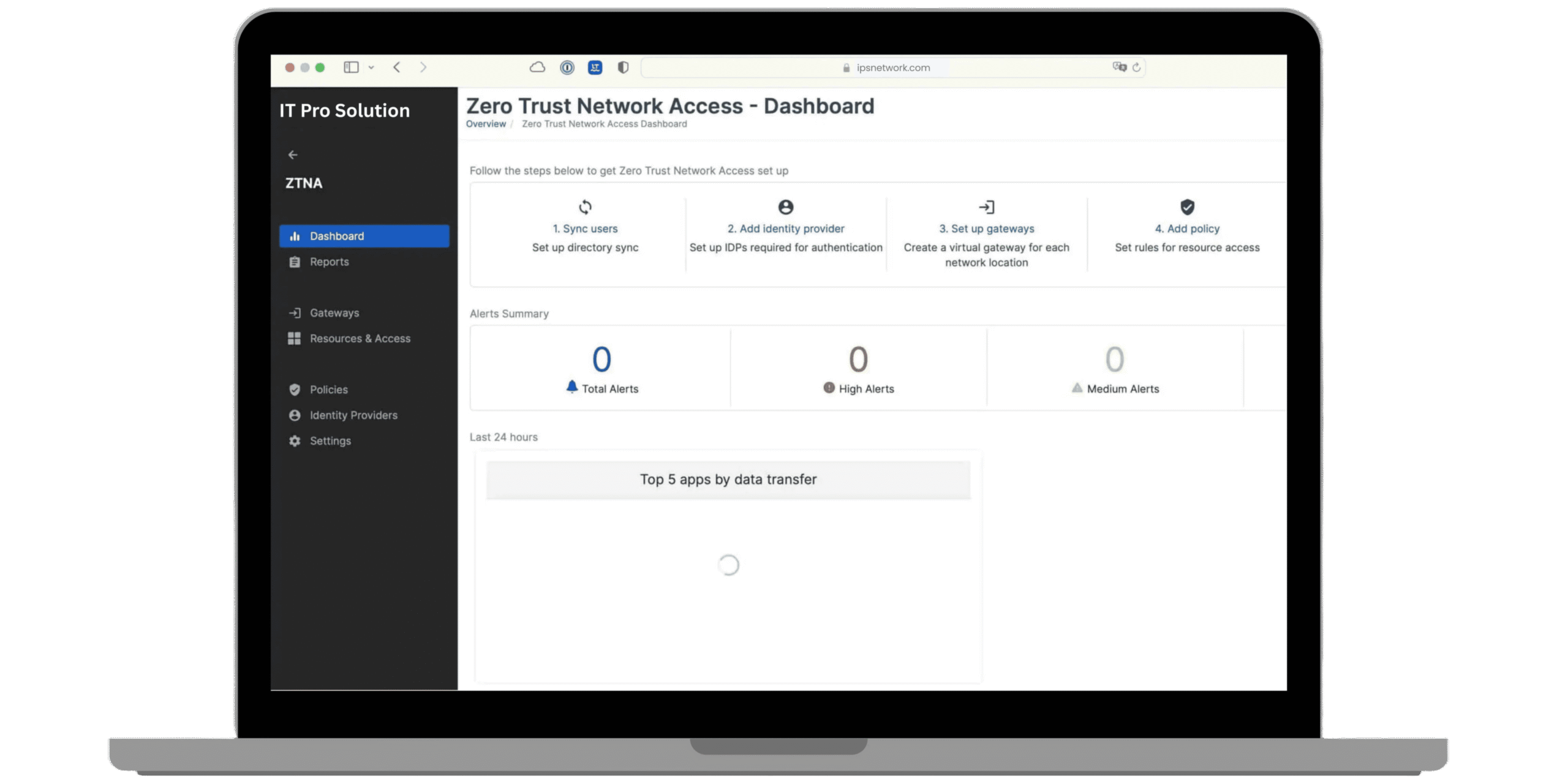Network Security
The Revolution in Digital Security
Zero Trust Architecture
Fast-track your Zero Trust implementation with IPS’s best practices, cutting-edge trends, and a framework shaped by real-world experience.

TraditionalSecurity Architecture & Design
Security Architecture & Design focuses on creating a structured framework to protect an organization’s IT infrastructure and data from cyber threats. This framework includes policies, procedures, and technologies aimed at safeguarding information systems.
Traditionally, security architecture has been built around the concept of a secure perimeter, primarily relying on firewalls and other network security measures to create a boundary that protects internal resources from external threats.
The Problems with Traditional Security Architecture
Perimeter-Based Security: Traditional security models heavily depend on the idea of a secure perimeter, typically established using firewalls and other network-based security tools. The underlying assumption is that threats exist only outside this perimeter, so once users and devices are inside, they are inherently trusted. This approach fails to account for internal threats and lateral movement by attackers who have breached the perimeter.
Implicit Trust: In traditional security frameworks, once users are authenticated, they often receive broad access to network resources. This model assumes that all users and devices inside the perimeter are secure, which creates significant vulnerabilities. If an attacker gains access, they can exploit this implicit trust to move freely within the network and access sensitive data.
Static Defenses: Traditional security solutions are generally static, meaning they do not dynamically adjust to the constantly evolving threat landscape. They typically verify user and device credentials only during initial authentication and lack the capability to continuously monitor or re-verify credentials throughout a session. This static nature can leave networks exposed to advanced and adaptive threats that bypass initial security measures.
Traditional security models’ reliance on perimeter-based strategies, implicit trust, and static defenses makes them increasingly inadequate for protecting modern, distributed IT environments. As cyber threats evolve, a more dynamic and resilient approach like Zero Trust Architecture (ZTA) is required to enhance security posture and protect sensitive data.
Why Zero Trust
Zero Trust Architecture is a critical cybersecurity framework that assumes no user or device is trusted by default, even if they are within the network perimeter. At IPS, we implement Zero Trust to minimize risks by continuously verifying every access request, enhancing security across all your digital assets. This proactive approach ensures that only authorized users and devices can access your sensitive information, significantly reducing the potential for breaches.
Multi-disciplinary approach
Implement zero trust principles and utilize diverse security expertise, including micro-segmentation, to enhance protection and drive business success.
Enable Digital Transformation
Enhance your digital transformation with intelligent security solutions designed for today’s complex environments, including robust protection for cloud and on-premises assets.
Close Security Gaps
Address and close security gaps to minimize the risk of lateral movement within your network, enhancing overall protection and reducing vulnerabilities.

IPS OneSecure™+ Zero Trust
AI-driven protection built on a unified Zero Trust framework.
IPS OneSecure™ continuously verifies every user, device, and connection to eliminate implicit trust, reduce attack surfaces, and stop AI-powered threats — delivering smarter, faster, and more resilient security across your cloud and network environments.
Zero Trust defense areas
Identities
Implement strong authentication mechanisms to verify user identities and ensure that only authorized individuals gain access to your resources. IPS uses advanced authentication strategies to enhance identity security.
Data
Transition from perimeter-based data protection to data-driven protection. Utilize intelligence to classify and label data, encrypt sensitive information, and restrict access based on organizational policies to ensure comprehensive data security.
Endpoints
Ensure compliance and verify the health status of endpoints before granting access. IPS employs rigorous checks to confirm that devices meet security standards and are free of vulnerabilities.
Infrastructure
Use telemetry to detect attacks and anomalies, automatically block and flag risky behavior, and enforce least-privilege access principles. IPS strengthens infrastructure security through proactive monitoring and automated threat responses.
Apps
Identify shadow IT, ensure proper in-app permissions, and control access based on real-time analytics. IPS also monitors and manages user actions to maintain secure application environments.
Network
Ensure that devices and users are not trusted simply because they are on an internal network. Encrypt all internal communications, limit access based on policies, and employ micro-segmentation and real-time threat detection to protect your network.
Zero TrustMaturity Assessment
The IPS Zero Trust Maturity Assessment (ZTMA) assists clients in navigating their zero trust journey by addressing key challenges. Our experts evaluate initial use cases against industry-standard zero trust principles and align business and IT priorities with your specific security risks and compliance needs. The key steps include:
- Identifying security gaps based on the IPS Zero Trust governance model.
- Developing a zero trust security roadmap tailored to your unique security requirements, industry compliance standards, and investment strategies.
- Employing a use case-driven approach to enhance zero trust capabilities across various security domains, facilitating quicker adoption of the zero trust model.
Why Choose IPS forZero Trust Architecture?
At IPS, we specialize in delivering robust Zero Trust Architecture solutions tailored to meet the unique needs of your organization. Our approach focuses on comprehensive security that goes beyond traditional defenses, ensuring that every user, device, and application is continuously verified before being granted access.
Implementing Zero Trust
Implementing Zero Trust with IPS means adopting a security framework that is proactive and resilient. We help you deploy, integrate, and develop Zero Trust strategies that safeguard your digital assets from evolving threats.
Deploy, Integrate, and Develop
IPS works closely with your team to deploy Zero Trust principles across all aspects of your IT environment. We integrate these principles seamlessly with your existing systems and develop custom security measures to enhance your overall security posture.
Compare Your Progress
Our ongoing assessment and monitoring services enable you to compare your progress against established benchmarks, ensuring continuous improvement and adaptation of your Zero Trust capabilities. With IPS, you not only implement a secure framework but also gain insights into your security maturity, allowing you to make informed decisions and stay ahead of potential threats.

